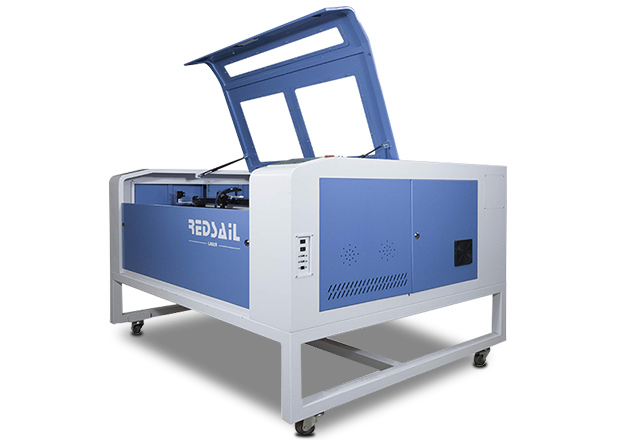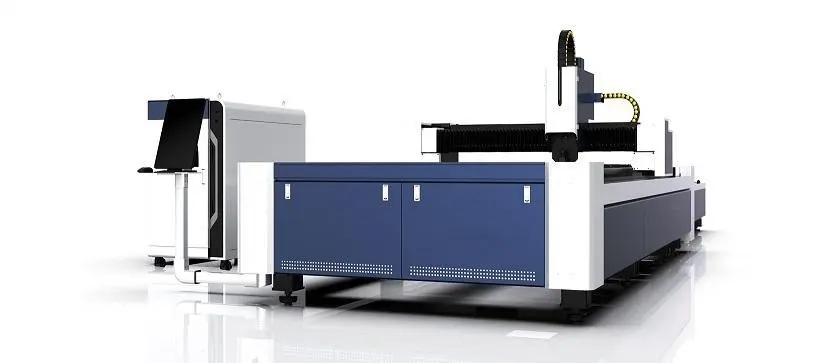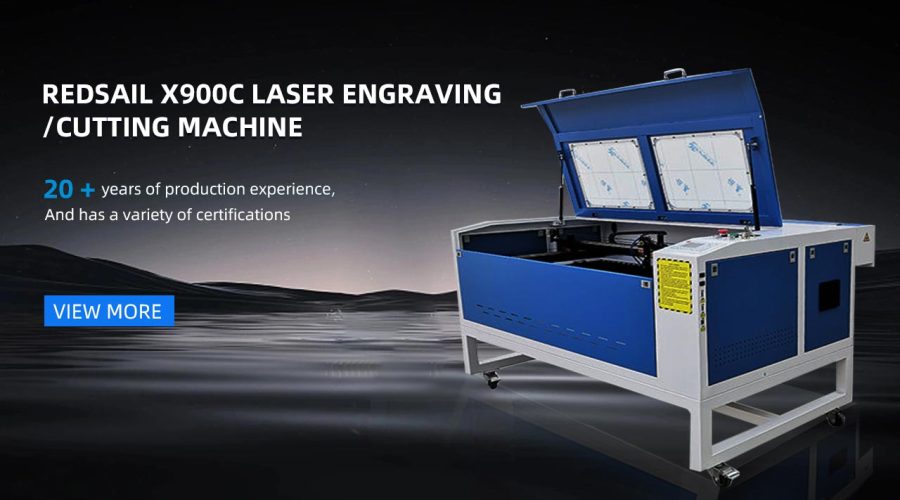Laser cutting process replaces the traditional mechanical knife with an invisible beam. It has the characteristics of high precision, fast cutting, not limited to cutting patterns, automatic typesetting saves materials, smooth incision, and low processing cost. It will gradually improve or replace it. Traditional metal cutting process equipment. The mechanical part of the laser cutter head has no contact with the workpiece, and will not scratch the surface of the workpiece during work; the laser cutting speed is fast, the incision is smooth and flat, and generally no subsequent processing is required; the cutting heat-affected zone is small, the deformation of the plate is small, and the kerf is narrow ( 0.1mm~0.3mm); the incision has no mechanical stress, no shearing burrs; high processing precision, good repeatability, no damage to the material surface; CNC programming, can process any plan, and can cut the whole board with a large format without Opening molds is economical and time-saving. Do you know what are the cutting methods of laser cutting machine?
Vaporization cutting
Vaporization cutting means that the removal of the processed material is mainly carried out by vaporizing the material. During the vaporization cutting process, the temperature of the surface of the workpiece rises rapidly to the vaporization temperature under the action of the focused laser beam, a large amount of material vaporizes, and the formed high-pressure steam is ejected outward at supersonic speed. At the same time, a “hole” is formed in the laser action area, and the laser beam is reflected multiple times in the hole, which makes the material’s absorption of the laser rapidly increase.
During the high-speed injection of high-pressure steam, the melt in the slit is blown away from the slit at the same time until the workpiece is cut off. Intrinsic vaporization cutting is mainly carried out by vaporizing the material, so the required power density is very high, generally it should reach more than 108 watts per square centimeter.
Vaporization cutting is a commonly used method for laser cutting some low ignition point materials (such as wood, carbon and some plastics) and refractory materials (such as ceramics, etc.). Vaporization cutting is also often used when cutting materials with pulsed lasers.
Reaction melting cutting
In melting cutting, if the auxiliary airflow not only blows away the melt in the slit, but also reacts with the workpiece to change heat, adding another heat source to the cutting process, such cutting is called reactive melting cutting. Usually the gas that can react with the workpiece is oxygen or a mixed gas containing oxygen.
When the surface temperature of the workpiece reaches the ignition point temperature, a strong combustion exothermic reaction will occur, which can greatly improve the ability of laser cutting. For mild steel and stainless steel, the energy provided by the exothermic reaction of combustion is 60%. For active metals such as titanium, combustion provides about 90% of the energy.
Therefore, compared with laser vaporization cutting and general fusion cutting, reactive fusion cutting requires lower laser power density, which is only 1/20 of vaporization cutting and 1/2 of fusion cutting. However, in reaction fusion cutting, the intrinsic combustion reaction will cause some chemical changes on the surface of the material, which will have an impact on the properties of the workpiece.
Melting cutting
In the laser cutting process, if an auxiliary blowing system coaxial with the laser beam is added, the removal of the melt during the cutting process does not rely solely on the vaporization of the material itself, but mainly relies on the blowing action of the high-speed auxiliary airflow to remove the melt Continuously blowing away from the kerf, this cutting process is called fusion cutting.
In the fusion cutting process, the workpiece temperature no longer needs to be heated above the vaporization temperature, so the required laser power density can be greatly reduced. According to the latent heat ratio of material melting and vaporization, the laser power required for fusion cutting is only 1/10 of the vaporization cutting method.
Laser scribing
This method is mainly used for: semiconductor materials; using a laser beam with a high power density to draw shallow grooves on the surface of semiconductor material workpieces, because this groove weakens the bonding force of semiconductor materials. It can reach mechanical method or vibration method to make it break. The quality of laser scribing is measured by the size of the surface debris and heat-affected zone.
Cold cutting
This is a new type of processing method, which was proposed with the emergence of high-power excimer lasers in the ultraviolet band in recent years. Its basic principle: the energy of ultraviolet photons is similar to the binding energy of many organic materials, and such high-energy photons are used to hit the binding bonds of organic materials and make them break. So as to achieve the purpose of cutting. This new technology has broad application prospects, especially in the electronics industry.
Thermal stress cutting
Under the heating of the laser beam, the surface of the brittle material is easy to generate a large stress, so that it can be broken neatly and quickly through the stress point heated by the laser. Such a cutting process is called laser thermal stress cutting. The mechanism of thermal stress cutting is: the laser beam heats a certain area of the brittle material so that it produces an obvious temperature gradient.
Expansion occurs when the surface temperature of the workpiece is higher. The lower temperature of the inner layer of the workpiece will hinder the expansion, resulting in tensile stress on the surface of the workpiece and radial extrusion stress in the inner layer. When these two stresses exceed the fracture limit strength of the workpiece itself. Cracks will appear on the workpiece. The workpiece is broken along the crack. The speed of thermal stress cutting is in the order of m/s. This cutting method is suitable for cutting materials such as glass and ceramics.





